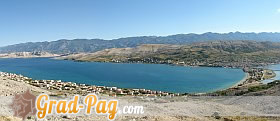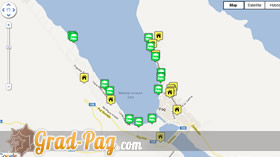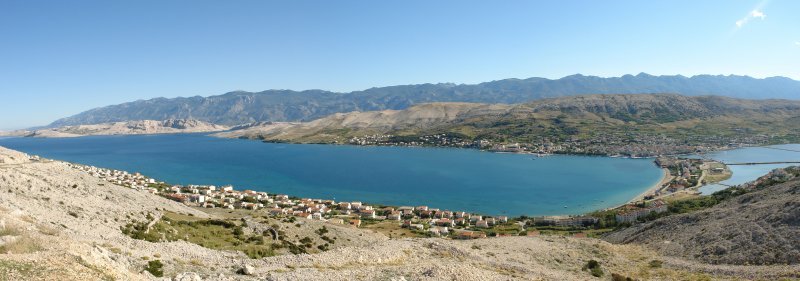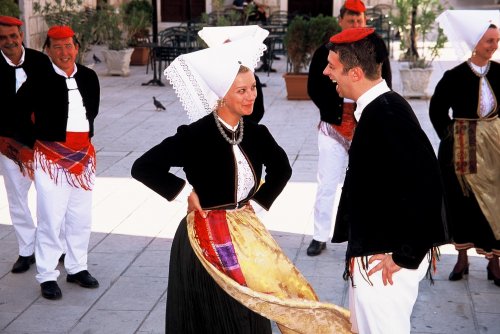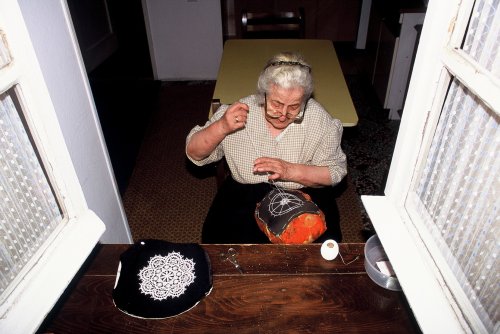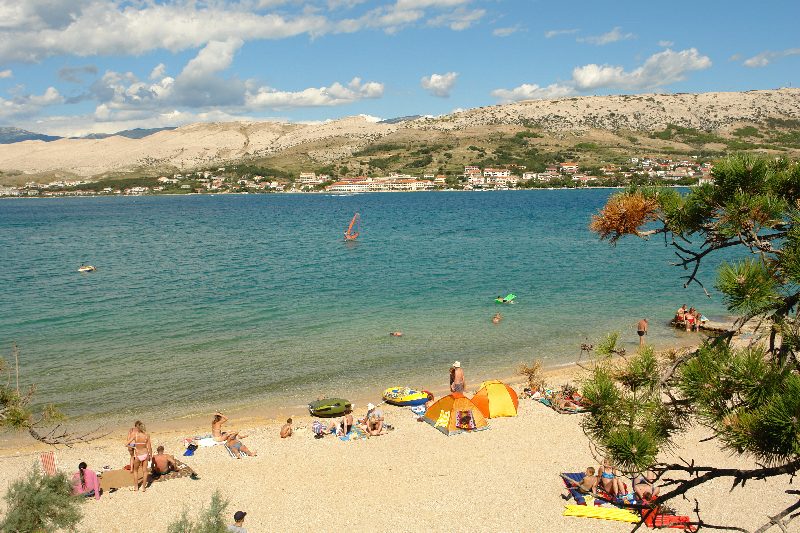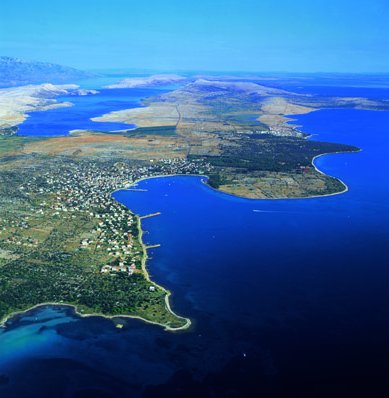La ville de Pag, L'île de Pag
City Pag
The city of Pag is the most historically and culturally interesting place on the island of Pag which remembers a long and turbulent history which numerous monuments can testify.
The city of Pag itself has relocated a few times during its history to be in its present located. The city started being built in the 15th century by architect-urban plan which was made by one of the greatest Croatian builders Juraj Dalmatinac. The very center of the city of Pag today is mostly preserved and renewed. Valuable cultural and historical monuments are: The parish church of St Mary on Kralja Petra Kresimira IV square (St Valentine's reliquary and a miraculous crucifix), the old Tower, the remnants of the town walls, Duke's palace .
Other than the historical monuments, the city of Pag is also known for its cultural richness. The most famous is definitely the Pag lace – recently under the protection of UNESCO as Croatian non-material heritage. Other than Pag lace, there is also Pag attire and Pag dance.
Baskotin – a golden baked bread – is one of the original Croatian products made by Benediction nuns which can only be bought in Sv. Margeret's convent in the center of the city. Baskotin is one of the rare Croatian products which carries the mark „Originally Croatian“ and „Croatian Island Product“.
Local people have been famous for its salt production. For centuries salt production was the most important economic activity in Pag. This is evidenced by salt storehouses built back in the 16 century, where today stands Museum of Salt.
Apart from producing salt (the Pag salt works are as old as the town itself) the inhabitants also raise sheep (the famous Pag cheese and lamb), make wine (paska zutica), and are involved in agriculture and fishing.
The town of Pag is rich in sandy, pebble and stone beaches. The ring of Pag bay consists of 27 km of beaches. You can reach most of the beaches by car, except the ones located in the Pag doors which can be reached exclusively by boat. The largest beach is Prosika located in the immediate vicinity of the center of the town of Pag.
City Pag
The city of Pag is the most historically and culturally interesting place on the island of Pag which remembers a long and turbulent history which numerous monuments can testify.
The city of Pag itself has relocated a few times during its history to be in its present located. The city started being built in the 15th century by architect-urban plan which was made by one of the greatest Croatian builders Juraj Dalmatinac. The very center of the city of Pag today is mostly preserved and renewed. Valuable cultural and historical monuments are: The parish church of St Mary on Kralja Petra Kresimira IV square (St Valentine's reliquary and a miraculous crucifix), the old Tower, the remnants of the town walls, Duke's palace .
Other than the historical monuments, the city of Pag is also known for its cultural richness. The most famous is definitely the Pag lace – recently under the protection of UNESCO as Croatian non-material heritage. Other than Pag lace, there is also Pag attire and Pag dance.
Baskotin – a golden baked bread – is one of the original Croatian products made by Benediction nuns which can only be bought in Sv. Margeret's convent in the center of the city. Baskotin is one of the rare Croatian products which carries the mark „Originally Croatian“ and „Croatian Island Product“.
Local people have been famous for its salt production. For centuries salt production was the most important economic activity in Pag. This is evidenced by salt storehouses built back in the 16 century, where today stands Museum of Salt.
Apart from producing salt (the Pag salt works are as old as the town itself) the inhabitants also raise sheep (the famous Pag cheese and lamb), make wine (paska zutica), and are involved in agriculture and fishing.
The town of Pag is rich in sandy, pebble and stone beaches. The ring of Pag bay consists of 27 km of beaches. You can reach most of the beaches by car, except the ones located in the Pag doors which can be reached exclusively by boat. The largest beach is Prosika located in the immediate vicinity of the center of the town of Pag.
L'île de Pag
L'île de Pag est une des plus grandes îles de l'Adriatique: avec 285 km 2 de surface elle est située a la cinquieme place, et avec 270 km de côte sinueuse, l'île a la plus longue ligne littorale de l'Adriatique, remplie de golfes, de baies, de caps et de plages. Pag est unique par sa végétation, puisqu'il n'y a guere d'arbres.
Pag est le plus grand empire du terrain pierreux de l'Adriatique sillonné par de longs murs en pierres seches, ou poussent l'herbe fin, les plantes aromatiques, la sauge et l'immortelle. C'est exactement cettes plantes qui font le base de la nourriture des brebis de Pag sur ce terrain pierreux, qui donne le gout spécial au fromage connu de Pag.


















 Page d'accueil
Page d'accueil